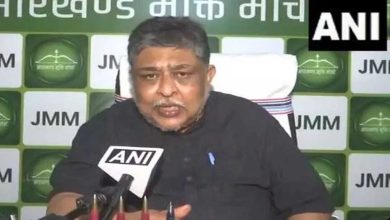A change in approach is needed in the third master plan for Chennai

Master plan is a borrowed concept in India adapted from the UK Town and Country Planning Act, 1947. It is a comprehensive long-term plan. It analyses sector-wise data – economic, transportation, housing, health, education, recreation, water supply, sewer network, stormwater drain, and electricity, to identify the gaps between the demand and supply.
Then comes forecast of population for the horizon period of 20 years, and assessing future demand for the projected population in every sector. Land requirement in every sector is estimated and finally appropriate uses are assigned to all land parcels within the planning area. This decides where and how many industries, housing, healthcare and educational facilities are located, road networks are aligned, parks, playgrounds, and other aspects are located and those boil down to proposals of the master plan.
Such predictions and pre-assignments were okay during 1960s and 1970s when society was static and the pace of development was leisurely. However, today’s society is dynamic, and the pace of development is rapid that it might not be that easy even to envision the pattern of development even for a year or two, not to talk of two decades.
The majority of Chennaiites belong to economically lower and lower-middle-income groups. Therefore, the SMP ought to have proposed a generation of more employment opportunities for the poor. Simply by zoning land for industry, employment cannot be conjured up. Planning and programming must proceed on several fronts concurrently. Similarly, the SMP should have proposed housing and basic amenities for migrants, unskilled informal workers and slum-dwellers besides facilitating training to upgrade their skills. But, it does not.
The other objective is to make social facilities such as health, education and recreation distributed evenly with equity in accessibility to all people. Clustering of most higher education institutions along Rajiv Gandhi Salai resulted in inequity and has increased travel time and distance and that bears testimony to inequity in distribution of such facilities.
Commuting is a nightmarish experience for most people in Chennai, particularly the poor and lower middle-class people. Public transportation is awfully inadequate and its share has steadily declined over the years. There is a clear bias in favour of cars and two-wheelers in the provision of road infrastructure at the cost of pedestrians, cyclists and bus passengers.
The SMP has not spelt out any action plan to promote public transportation and non-motorised transportation. A financial plan and strategy for mobilisation of financial resources are crucial for the successful implementation of any master plan. However, the SMP is silent on those aspects. Consequently, many key proposals of SMP remain on paper.
Conventional master plans have rigid land use zoning. Development regulations are more prescriptive than promotive of development. The DR with painstaking efforts lists a myriad of uses permissible in every land use zone. However, the DR has proved to be an ineffective instrument for regulating dynamic land use development. The DR system is marked by violations, deviations, unauthorised developments, prolonged delays, and political interference.
The zoning regulation of DR can be simplified by listing only the uses not permissible in every zone. Last but not least is the bottom-up approach in plan preparation, implementation and enforcement. The bottom line of the stakeholders’ participation is empowering politically and economically dismpowered to have a say in the planning process. Otherwise, the third master plan will be far from the people, buy the people, and off the people.
















